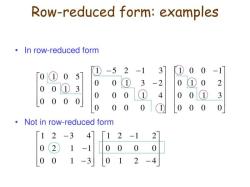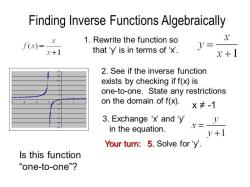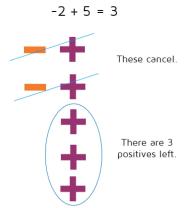What is one solution math?
"One solution" in mathematics refers to a specific scenario in which a mathematical equation or system of equations has a single unique solution, meaning there is only one set of values for the variables that satisfies the equation(s). This concept is not limited to algebra but can be applied to various branches of mathematics, including algebra, geometry, calculus, and more.
Here's a broader look at the concept of one solution in mathematics:
Algebra: In algebra, one solution is often associated with linear equations or systems of linear equations. For a single linear equation like "ax + b = c," there is one unique solution for the variable "x" if "a" is nonzero. In systems of linear equations, one solution occurs when there is a unique set of values for the variables that simultaneously satisfies all equations in the system.
Geometry: In geometry, one solution might refer to finding the unique intersection point of two lines, the center of a circle, or the solution to a geometric problem that has a single valid answer.
Calculus: In calculus, finding one solution can relate to determining a specific value or point on a curve or function, such as finding the x-coordinate where a function reaches its maximum or minimum value.
Differential Equations: In the context of differential equations, finding one solution may involve solving for a specific solution curve that satisfies the given differential equation under certain initial conditions.
Optimization: In optimization problems, one solution often refers to finding a single optimal solution that maximizes or minimizes a particular objective function. This solution is unique among the set of possible choices.
Roots of Equations: In the broader context of mathematical equations, finding one solution may mean identifying a single root (or solution) for a given equation. This could involve solving polynomial equations, trigonometric equations, or exponential equations.
The presence of one solution is a desirable outcome in many mathematical problems because it often corresponds to a unique and meaningful solution to the problem at hand. However, it's essential to recognize that not all mathematical problems have one solution. Some equations may have no solution, infinitely many solutions, or multiple solutions, depending on the nature of the problem and the equations involved. The uniqueness of the solution depends on the specific mathematical context and the conditions of the problem.
Solving Equations: Exploring the Concept of One Solution in Mathematics
In mathematics, a one-solution equation is an equation that has exactly one solution for the unknown variable. This means that there is only one value for the variable that makes the equation true.
One-solution equations can be written in a variety of forms, but they all have one thing in common: they are all solvable. This means that there is a mathematical process that can be used to find the solution to the equation.
Some examples of one-solution equations include:
- Linear equations, such as
2x + 3 = 7 - Quadratic equations, such as
x^2 - 3x + 2 = 0 - Rational equations, such as
\frac{3x}{x + 1} = 2 - Exponential equations, such as
e^x = 3 - Logarithmic equations, such as
log(x) = 2
Mathematical Clarity: Understanding the Notion of a Single Solution
The notion of a single solution in mathematics is important because it allows us to solve equations with certainty. When we know that an equation has exactly one solution, we can be sure that the answer we get is correct.
There are a number of different ways to solve equations, but they all rely on the same basic principle: to isolate the unknown variable on one side of the equation. Once the unknown variable is isolated, we can solve for its value.
For example, to solve the equation 2x + 3 = 7, we would first subtract 3 from both sides of the equation. This gives us:
2x = 4
Next, we would divide both sides of the equation by 2. This gives us our solution:
x = 2
We can check our answer by substituting x = 2 back into the original equation:
2(2) + 3 = 7
4 + 3 = 7
7 = 7
Since both sides of the equation are equal, we know that our answer is correct.
3. Unique Solutions in Math: The Meaning of "One Solution"
The meaning of "one solution" in mathematics is that there is only one value for the unknown variable that makes the equation true. This is in contrast to equations that have no solutions or infinitely many solutions.
An equation with no solutions is an equation that cannot be satisfied by any value of the unknown variable. For example, the equation 1 = 2 has no solutions because there is no number that, when substituted for x, makes the equation true.
An equation with infinitely many solutions is an equation that is satisfied by every value of the unknown variable. For example, the equation x + 0 = x has infinitely many solutions because every value of x satisfies the equation.
The concept of a one-solution equation is important because it allows us to solve equations with confidence and to develop and use mathematical models to solve real-world problems.
Here are some examples of real-world problems that can be solved using one-solution equations:
- Predicting the distance that a falling object will travel after a given amount of time
- Calculating the interest earned on a savings account over a given period of time
- Determining the dosage of a medication needed to achieve a desired therapeutic effect
One-solution equations are an essential tool for understanding and solving a wide range of mathematical problems.













